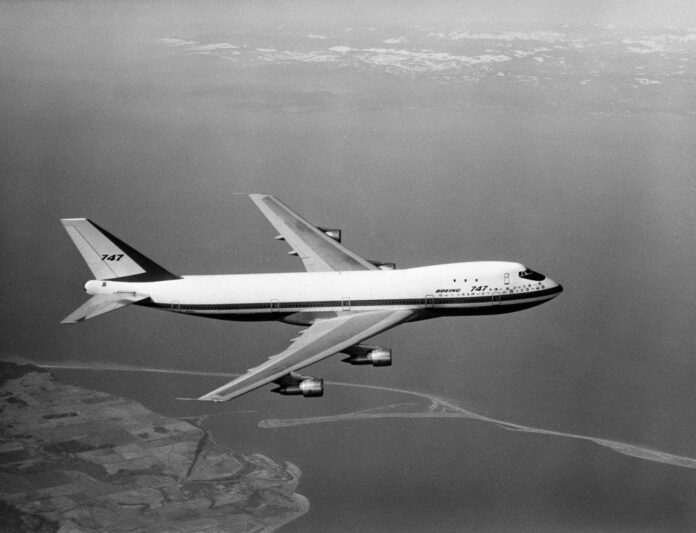In the vast expanse of the skies, where dreams of exploration and connectivity take flight, lies the awe-inspiring world of aviation. As passengers, we board aircraft with a sense of wonder, marveling at the elegant machines that effortlessly lift us off the ground and carry us to distant horizons. But have you ever paused to ponder the science behind this miraculous feat? Join us as we unveil the intricate mechanics that enable commercial aircraft to conquer gravity and stay airborne, defying the limits of what was once thought possible.
Wings of Wonder: Lift and Bernoulli’s Principle
The fundamental principle that allows an aircraft to achieve flight is lift, the force that counters the weight of the aircraft and keeps it suspended in the air. This lift is generated by the aircraft’s wings, which are carefully designed to take advantage of Bernoulli’s principle. According to this principle, as air flows over the curved upper surface of an aircraft’s wing, its velocity increases, resulting in lower pressure. This lower pressure creates an upward force that lifts the aircraft.
Shape Matters: Airfoil Design
The shape of an aircraft’s wing, known as an airfoil, is meticulously engineered to optimize lift generation. Airfoils have a curved upper surface and a flatter lower surface. This asymmetrical shape ensures that air flowing over the wing travels faster than the air beneath it, creating the pressure differential needed for lift. Additionally, the angle of attack – the angle at which the wing meets the oncoming air – plays a crucial role in controlling lift and ensuring stable flight.
Taming Drag: Streamlining and Aerodynamics
While lift is essential for flight, aircraft must also overcome drag – the resistance of the air that opposes forward motion. Streamlining and aerodynamics are key to minimizing drag and maximizing efficiency. Aircraft designers carefully shape the fuselage, wings, and other components to reduce drag-inducing turbulence. Smooth surfaces, tapered edges, and winglets are just a few design elements that help streamline the aircraft and optimize its performance.
Thrust and Propulsion: The Power to Propel
To overcome the forces of drag and maintain steady flight, an aircraft requires a source of thrust – the forward-propelling force. Most commercial aircraft achieve thrust through jet propulsion engines, which expel high-speed exhaust gases to create forward motion. These engines are marvels of engineering, featuring components such as compressors, combustion chambers, and turbines that work in harmony to generate massive amounts of thrust.
High and Mighty: Altitude and Atmospheric Conditions
As aircraft climb higher into the atmosphere, the air becomes thinner, posing unique challenges for flight. The density of the air decreases with altitude, affecting lift generation and engine performance. Pilots and flight computers continuously adjust various parameters, such as engine power and control surfaces, to ensure optimal performance as the aircraft navigates through changing atmospheric conditions.
The Role of Control Surfaces: Maneuverability and Stability
Control surfaces are movable components on an aircraft’s wings and tail that allow pilots to control its attitude, stability, and direction. Ailerons, elevators, and rudders enable the aircraft to roll, pitch, and yaw, respectively. These surfaces work in tandem with the aircraft’s flight control systems, which can be manually operated by pilots or managed by fly-by-wire systems. By adjusting these surfaces, pilots can maintain stable flight, execute maneuvers, and respond to changing conditions.
Staying Balanced: The Center of Gravity
An aircraft’s center of gravity (CG) is a crucial factor in maintaining stable flight. The CG is the point at which the aircraft’s weight is evenly distributed. Proper CG positioning ensures that the aircraft remains balanced and responsive to control inputs. During loading and fueling, airlines carefully distribute passengers, cargo, and fuel to maintain the aircraft’s desired CG position within a safe range.
Flaps and Slats: Enhancing Performance
During takeoff and landing, an aircraft’s flaps and slats are extended to modify the shape of its wings. Flaps increase lift and decrease stall speed, allowing the aircraft to operate at lower speeds during critical phases of flight. Slats, located at the leading edge of the wings, enhance lift by directing airflow over the wings more effectively. These adjustable surfaces contribute to the aircraft’s ability to operate in a variety of conditions.
Achieving Balance: Center of Pressure and Lift Distribution
As an aircraft flies, its center of pressure – the point at which the lift force is applied – changes. Designers carefully engineer the aircraft to maintain stability and control by ensuring that the center of pressure remains within a specific range. The distribution of lift along the wings also contributes to stability, preventing unwanted rolling or pitching motions.
Conclusion: The Marvel of Human Ingenuity and Flight
As you settle into your seat and watch the world disappear beneath the clouds, remember that the miracle of flight is the result of centuries of human ingenuity and scientific exploration. The science of flight, from Bernoulli’s principle to aerodynamics and propulsion, combines with engineering brilliance to create the graceful symphony that is commercial aviation. Each time you soar through the skies, take a moment to appreciate the intricate dance of forces, surfaces, and systems that make this remarkable journey possible.
























